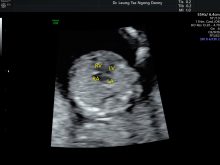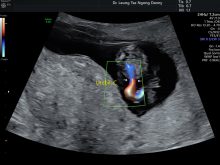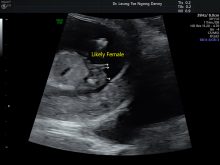1. What is first trimester fetal morphology scan?
- An early ultrasound assessment of the fetal structures in the first trimester;
- Aims for early diagnosis of fetal structural defects and screening for markers of chromosomal and genetic abnormalities
2. What are the advantages of early fetal morphology assessment?
- Early identification of markers or abnormalities allows prenatal diagnosis for chromosomal or genetic cause;
- Early counseling on the prognosis of the condition;
- Early termination of pregnancy can be offered in the first trimester if indicated
3. Safety of the first trimester morphology scan to the fetus?
Based on numerous follow-up studies on children who were scanned before birth, there is no evidence that in-utero exposure of antenatal ultrasound is associated with any undesirable biological effects.
4. How is first trimester morphology scan different from the ordinary antenatal ultrasound?
- For ordinary first trimester antenatal ultrasound, the fetal heart pulsation, fetal length (CRL), amniotic fluid volume around the fetus and the placental site are usually assessed;
- For a first trimester fetal morphology scan, the above parameters are checked. In addition, the following structures are being assessed: cranium, falx cerebri, choroid plexus, orbits, facial profile, nasal bone, mandible, nuchal translucency, spine, 4 chamber heart, fetal heart rhythm, lung, stomach, umbilical cord insertion, bladder, 3 vessel’s cord, long bones of limbs, hands and feet
5. When is the best timing for first trimester fetal morphology scan?
12-14 weeks of gestation
6. Who needs first trimester morphology scan?
- Personal or family history of fetal structural or chromosomal abnormality;
- An earlier ultrasound scan has suspected fetal structural abnormality, including an increase in nuchal translucency;
- Patient’s choice for an early assessment of the fetal structures for reassurance
7. What are the limitations of first trimester morphology scan?
- First trimester morphology scan can pick up 50% of all structural abnormalities. At this early stage of pregnancy, the organs will continue to develop and the fetal size is still small, some major malformations may not be obvious or may only develop in later pregnancy;
- Sometimes, structural abnormalities might be suspected but cannot be confirmed yet on a first trimester morphology scan. In these situations, further morphology scans are needed in a few weeks to confirm or refute the diagnosis. As a result, the early fetal morphology scan would have generated some form of parental anxiety inadvertently;
- Like the second trimester morphology scan, the accuracy of an early morphology scan depends on a number of factors, including the severity and nature of the abnormality, fetal position, women’s factors such as thickness of the tummy or whether there is surgical scar or not
8. Can first trimester morphology scan replace Downs syndrome screening or the routine second trimester morphology scan?
- First trimester morphology scan serves a different purpose from a Downs screening test and hence it cannot act as a substiture;
- Some gross malformations may develop later in pregnancy and may not be detected in the first trimester. Hence, first trimester morphology scan carries a lower detection rate of structural abnormalities compared with the second trimester morphology scan (usually performed at 20-22 weeks of gestation);
- Even with a normal first trimester fetal morphology scan, screening test for chromosomal abnormalities (such as OSCAR or NIPT) and the routine second trimester morphology scan are still advised























